By Joshua Cline
Few units in the U.S. Army can claim to have potentially saved the United States from destruction—twice. The Maryland National Guard, living up to the organizational march of “Always Ready, Always There,” proudly declares they have done exactly that, in no small part to the 175th Infantry Regiment. The 175th Infantry is the oldest continuously operating military unit in Maryland, the seventh oldest regiment in the U.S. Army (predating the U.S. Army by seven-and-a-half-months), and it is one of only thirty units in the Army and Army National Guard that can claim colonial-era lineage, and one of only nineteen units with a War of 1812 campaign streamer.
The origins of the 175th Infantry lie in the Baltimore Independent Cadets, formed on 3 December 1774 and led by Captain Mordecai Gist. When the Maryland Assembly sent its first regiment to the Continental Army on 1 January 1776, the regiment’s eighth company was Captain Gist’s rechristened Baltimore Independent Company. The Tories of New York called the Marylanders “Macaronis” in reference to their colony, excellent equipment, and pride in their abilities to drill (the term being contemporary slang for somebody failing to be fashionable, most notably being in the lyrics to “Yankee Doodle”).
At the Battle of Long Island on 27 August 1776, 9,000 American troops faced 30,000 British regulars and Hessian mercenaries in one of the largest engagements of the Revolutionary War. General George Washington found his route of retreat blocked by a house filled with British soldiers who had a cannon on the second floor. Washington ordered what he called his “Old Line” to fight as his army’s rear guard, a conglomerate of Marylanders (primarily Gist’s company) and Delawareans. Outnumbered almost eight to one, the Old Line assaulted the stone house repeatedly, resorting to the bayonet when ammunition ran low in one of the first uses of cold steel by U.S. troops in combat. Of the “Maryland 400,” 256 were killed and less than a dozen made it to safety. Washington, witnessing the heroism from a redoubt, reportedly uttered to Major General Israel Putnam, “Good God, what brave fellows I must this day lose!” The monument to the dead in Brooklyn’s Prospect Park declares the Old Line “saved the American Army.”
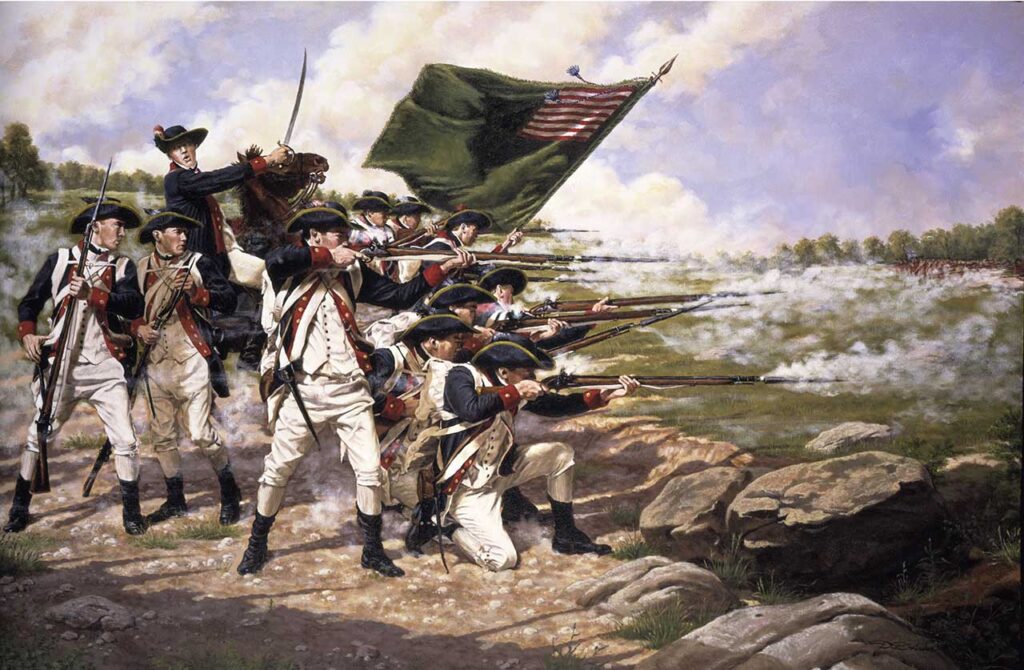
Following the Battle of Long Island, the Maryland Regiment participated in actions at Harlem Heights, Fort Washington, and White Plains. In many of the battles that followed Long Island, the bayonet was a key part of the regiment’s weapon of choice, and the unit itself proved a key element of the Continental Army.
The Maryland Brigade, Continental Line, was formed in December 1776-March 1777. In September 1777, the brigade participated in the Battle of Brandywine, and in October, the Battle of Germantown. In 1780 the Maryland Brigade was reorganized into two units, the 1st and 2d Maryland Brigades. On 5 April 1780, the units were assigned to the Southern Department, becoming two of the few units in the Continental Army credited with participation in both the Northern and Southern Theaters. In South Carolina, the brigades fought in the Battle of Camden in August 1780, covering Major General Horatio Gates’s retreat and being decimated in the process. The 175th’s lineage descends from the 1st Maryland Regiment, reorganized 13 September 1780, which fought in North Carolina at Guilford Courthouse in March 1781. After Guilford Courthouse, the Marylanders saw action at Eutaw Springs on 8 September 1781 and conducted another bayonet charge. Last but certainly not least, the 1st Maryland Brigade was present for the Siege of Yorktown. The regiment was reorganized and redesignated as the Maryland Battalion in 1783 before being mustered out of service on 15 November.
In December 1787, the 1st Baltimore Light Infantry Company of Volunteers was organized. During the Whiskey Rebellion of 1794, the company was expanded into the 5th Regiment of Militia and marched to put down the insurrection. The unit would eventually gain the nickname “Dandy Fifth” in reference to their well-maintained equipment and uniforms, as well as their pride in being well-drilled. During the War of 1812, Maryland militia units did not serve outside of Maryland; the militia was mustered into federal service in full on 19 August 1814 when British Major General Robert Ross’s 5,400 veterans of the Napoleonic Wars landed at Benedict on the Patuxent River. On 24 August, the Battle of Bladensburg erupted just outside of Washington, DC. At the time of the battle, the 5th Maryland was led by Lieutenant Colonel Joseph Sterett’s. Brigadier General William H. Winder was still positioning units when the British arrived and was woefully underprepared for the battle that followed. Placed in the first line of defense, the inexperienced men around the 5th quickly retreated when bombarded by Congreve rockets, leaving the 5th holding their ground alone as regiment fought valiantly until outflanked and were forced to withdraw.
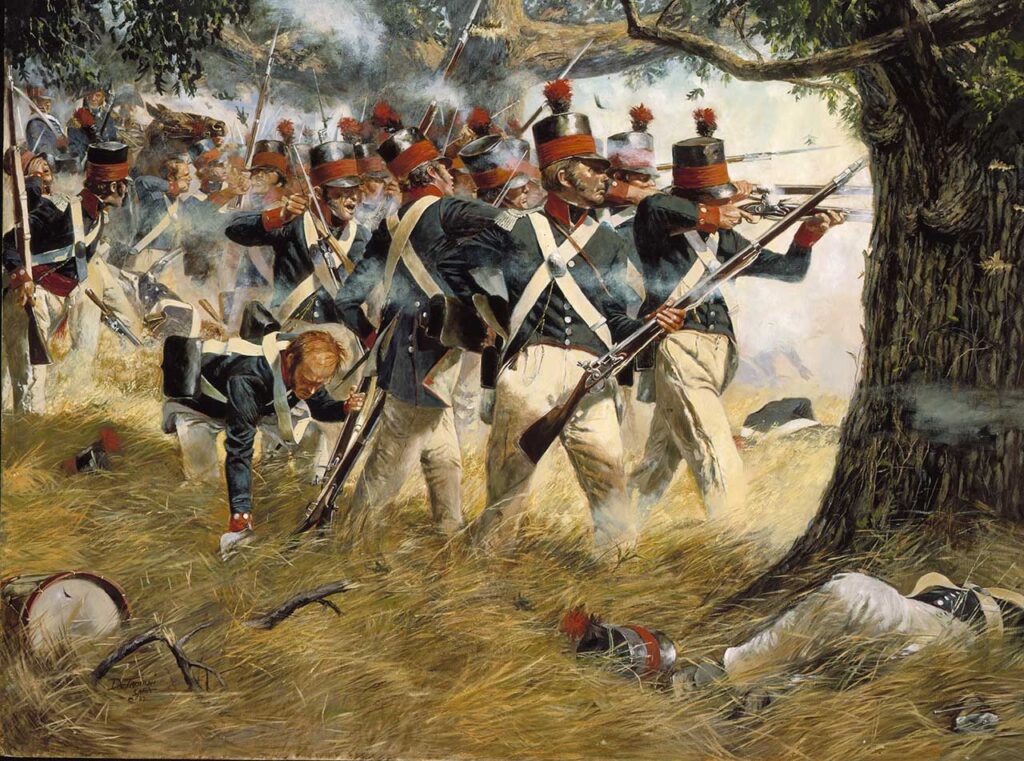
As Washington burned following Bladensburg, it was clear the next target of the British was Baltimore, the 5th Regiment of Militia’s home. Major General Samuel Smith, one of Mordecai Gist’s Cadets in his youth and a veteran of the Maryland 400, commanded the defense. The 3d (Baltimore City) Brigade, which included the 5th, advanced to North Point. There, on 12 September 1814, the 5th was a key unit of the Maryland Militia’s successful delaying action, holding the right flank of the American force. Two companies of the 5th and a few sharpshooters of the Independent Blues Company harassed the British advance guard. Major General Ross, on a white horse at the head of the British column, was spotted by riflemen Daniel Wells and Henry McComas, a pair of teenage Marylanders. The two sharpshooters fired simultaneously and mortally wounded the general, but at the cost of their own lives as they were quickly spotted and shot down. The 5th held the line during two hours of intense combat even as other units withdrew around them. When the 5th’s sister units reformed at a new position, the 5th retired in excellent order and joined them. “We were the last that left the ground,” wrote Corporal John McHenry, adding “…had our Regiment not retreated at the time it did we should have been [surrounded] in two minutes.” On 14 September, after an unsuccessful naval bombardment of Fort McHenry, the British forces retreated and sailed away, ending the war for the State of Maryland, preventing both Baltimore’s burning and the potential destruction of the heart of America. The 5th mustered out of federal service on 18 November 1814, one of only nineteen National Guard units with campaign credit in the War of 1812.
During the Antebellum Period, the 53d Regiment of Volunteer Infantry formed in 1835, another unit to which the 175th claims lineage. During the Civil War, Maryland, the northernmost slave state, was split almost equally in support of the Union and the Confederacy. Among the thousands of Marylanders who chose to fight for the South were a majority of the militiamen from the 5th and 53d Regiments. They organized the Confederate 1st Maryland Infantry at Harpers Ferry in June 1861. The Confederate 1st Maryland fought actions at First Bull Run, in the Peninsula Campaign, and during the Shenandoah Valley Campaign. On 23 May 1862, the Confederate 1st Maryland clashed with the Union 1st Maryland at Front Royal, Virginia, during the 1862 Shenandoah Valley Campaign. After the Confederate 1st was disbanded due to heavy losses, the 2d Battalion Maryland Infantry took up the Rebel banner, fighting at Gettysburg, Cold Harbor, and Petersburg, and it was present for the surrender at Appomattox Court House, 9 April 1865, by then reduced to sixty-three officers and men. The 175th was later awarded seven campaign streamers for the Confederate unit’s actions, which were removed in 2022 when such streamers were no longer authorized.
The Maryland State Legislature rendered ineligible all those who had served the Confederacy until that particular act was repealed in 1867, when the Maryland Militia was redesignated the Maryland National Guard. The 5th Regiment of Volunteer Infantry, Maryland National Guard, was then reorganized on 10 May 1867. During the Baltimore Railroad Strike of 1877, the State of Maryland mobilized the 5th. Marching through Baltimore, the regiment advanced with fixed bayonets to secure Camden Station, accomplishing their mission without undue violence. Joined by the soon-to-be disgraced 6th Regiment (which had killed at least thirteen civilians on their disorganized march to the station) and the newly formed 7th and 8th, the 5th held until the riot petered out, and federal forces secured control of the city. The only other mobilization between then and the Spanish-American War was in 1894 for similar labor unrest.
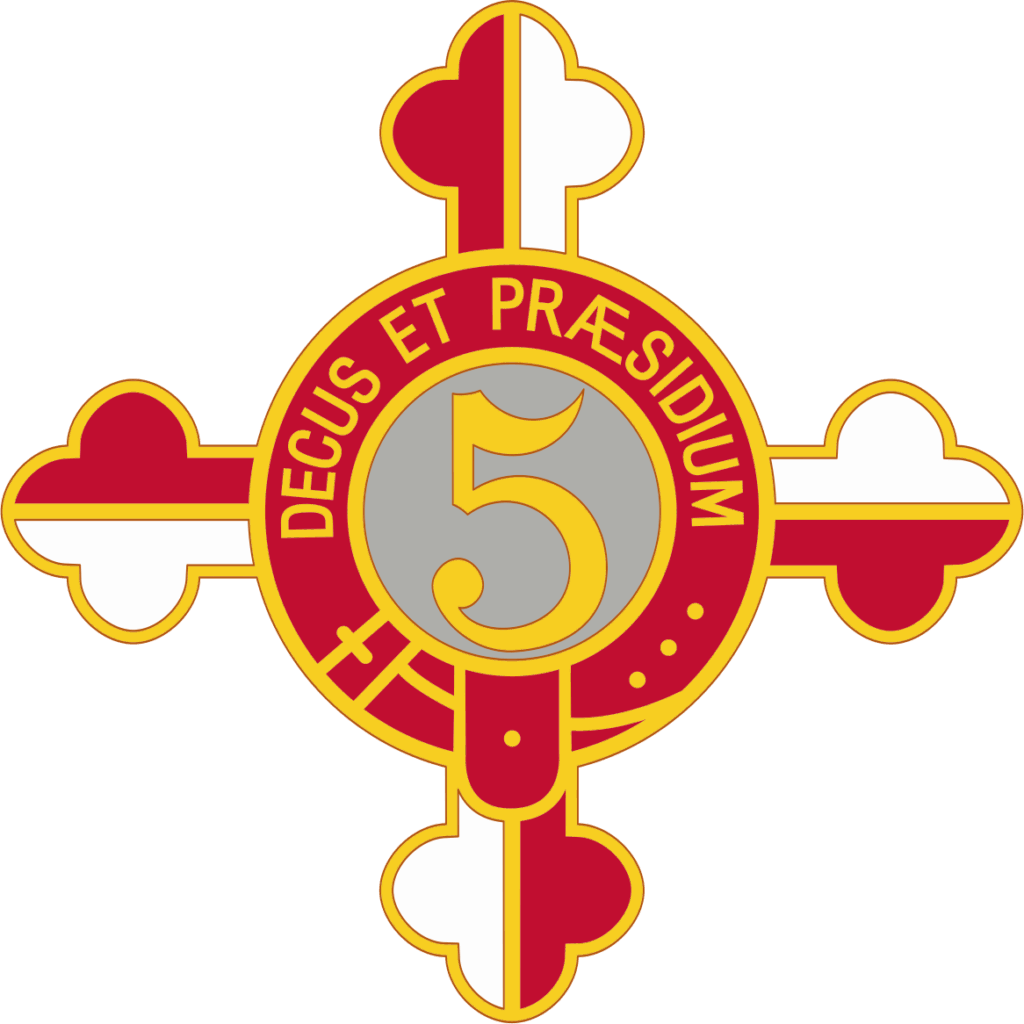
During the 1880s, the 5th Maryland adopted regimental colors. The flag was in four quadrants, based on the coat-of-arms of the Calverts, Maryland’s founding family. It became the official regimental colors in 1899; in 1904, the State of Maryland adopted the 5th’s colors as the state flag. The 175th Infantry inherited the 5th’s colors, making it the only regiment of the National Guard with identical colors to the flag of its state.
The 5th Regiment volunteered for service in the Spanish-American War on 14 May 1898. It was mustered into service as the 5th Maryland Volunteer Infantry. The 5th never reached any combat theater before returning to Baltimore, having been ravaged by malaria in Florida, and mustered out of federal service on 22 October. The Spanish-American War revealed a dire lack of training and other deficiencies in the National Guard. To remedy this, Congress passed the Militia Act of 1903 (also known as the Dick Act, after Representative Charles Dick) that established the modern Maryland National Guard (MDNG), with the requirement that Guard units be outfitted and trained to Regular Army standards. During the Great Baltimore Fire of 8 February 1904, the 5th was called out to perform acts of rescue and protect property from looters, with their newly built Fifth Regiment Armory hosting displaced businesses.
In 1916 the entirety of the Maryland National Guard was federalized to help guard the Mexican border during the Regular Army’s hunt for the revolutionary Pancho Villa after his deadly 9 March 1916 raid on Columbus, New Mexico. The 5th returned to Baltimore and mustered out on 24 February 1917 and was mobilized on 4 April to guard against possible sabotage of war industries by German agents, two days before the United States entered World War I on 6 April. The unit resumed federal service on 20 April. Redesignated as Headquarters Company and Supply Company, 5th Infantry Regiment, MDNG, the unit was assigned to the 29th Division on 26 July and drafted into federal service on 5 August. At Camp McClellan, Alabama, the 1st, 4th, and 5th Maryland Infantry Regiments were consolidated to form the 115th Infantry Regiment, 58th Brigade, 29th Division. Excess troops of the former 5th helped form the 110th Field Artillery and 110th Machine Gun Battalion, elements of which are claimed in the 175th’s lineage and honors.

The 29th Division, nicknamed the “Blue and Gray” Division, wore a shoulder sleeve insignia featuring a blue and gray Yin and Yang design symbolizing the unification of the North and South. It consisted of National Guard units from Pennsylvania, New Jersey, Maryland, Virginia, and the District of Columbia. Having trained for nearly nine months before setting sail for Europe, the 29th arrived in June 1918 and immediately entered the trenches in Alsace, the southernmost American position on the Western Front. The division suffered 744 casualties over the next two months. In late September, the 29th moved to the Meuse-Argonne sector, entering the line on 8 October 1918. The 115th fought in the Meuse-Argonne Offensive, capturing three miles of enemy territory on the first day. The unit fought for twenty-one days of the offensive, captured six miles of territory, and suffered 1,052 casualties, among them 131 dead. The 175th Infantry claims a Meuse-Argonne campaign streamer for the unit’s actions in World War I. The 29th Division was demobilized on 7 June 1919 at Camp George G. Meade, Maryland.
After the National Defense Act of 1920, the 5th was reconstituted in 1921 as the 5th Infantry, Maryland National Guard, reverting to the previous state designation. Twenty years later, as the United States prepared to join World War II, the 5th was redesignated the 5th Infantry Regiment (Rifle) on 1 May 1941, and then the 175th Infantry Regiment (Rifle) on 1 January 1941, federalized, and moved to Fort George G. Meade to join and train with the 29th Division, later redesignated the 29th Infantry Division. Training at Fort Meade and other forts on the East Coast ended when the 175th boarded the RMS Queen Elizabeth on 5 October 1942. The 175th continued training at Tidworth Barracks in Wiltshire, England, “near Andover and Salisbury,” with Colonel Philip Wood in command. The first casualties of the war were suffered when six soldiers were killed in an air raid while on leave on 23 May 1943. In the summer, the 175th moved to Cornwall, then underwent invasion training at Slapton Sands. On 1 May 1944, Colonel Philip Wood was replaced by Colonel Paul R. Goode as regimental commander. The men boarded the landing ships to join the invasion of Western Europe on 4 June, 1944.
On D-Day, 6 June 1944, the 175th was the 29th Division reserve. Their sister unit, the 115th, was awarded a Presidential Unit Citation (PUC) for capturing Saint-Laurent-sur-Mer on that day. The 175th landed on Omaha Beach on 7 June, D+1. Missing the first waves in no way means the 175th was spared; within two-and-a-half weeks, the regiment had lost two commanding officers: Colonel Goode was captured on 13 June, and Lieutenant Colonel Alexander George was seriously wounded on 17 June. Among the 175th‘s actions in Normandy were the grueling battle for Hill 108— “Purple Heart Hill”—on the road to Saint-Lô, a salient into German lines. For their actions in the pursuit of the Germans and capture of the city, the 175th was awarded a Presidential Unit Citation. The unit also participated in Operation COBRA in late July, with the 29th losing 3,500 men through the hedgerows before the German Seventh Army was trapped in the Falaise Pocket. Among their number was the 175th’s commanding officer, Colonel Ollie W. Reed, Sr., who was killed in action on 30 July. Following Normandy, the 29th Infantry Division fought in Brittany and took part in the capture of Brest, accomplishing this by 18 September. 2d Battalion, 175th Infantry, was awarded the French Croix de Guerre for capturing Fort Keranroux.
The 175th then fought during the advance to the Rhine River as part of Ninth Army’s offensive. In November, the 175th captured the German town of Aldenhoven. The occasion was marked by the first parade by a U.S. Army unit on German soil during the war, albeit with replacement personnel who were not Marylanders and who inadvertently held the regimental colors (and state flag) upside down. The incessant and deadly offensive had the regiment at the Roer River’s banks by the beginning of the Battle of the Bulge on 16 December. By doubling the amount of territory they were garrisoning on the riverbanks, the 29th freed the 2d Armored and 30th Infantry Divisions to fight in the Ardennes, crucial reinforcements against the German counteroffensive.
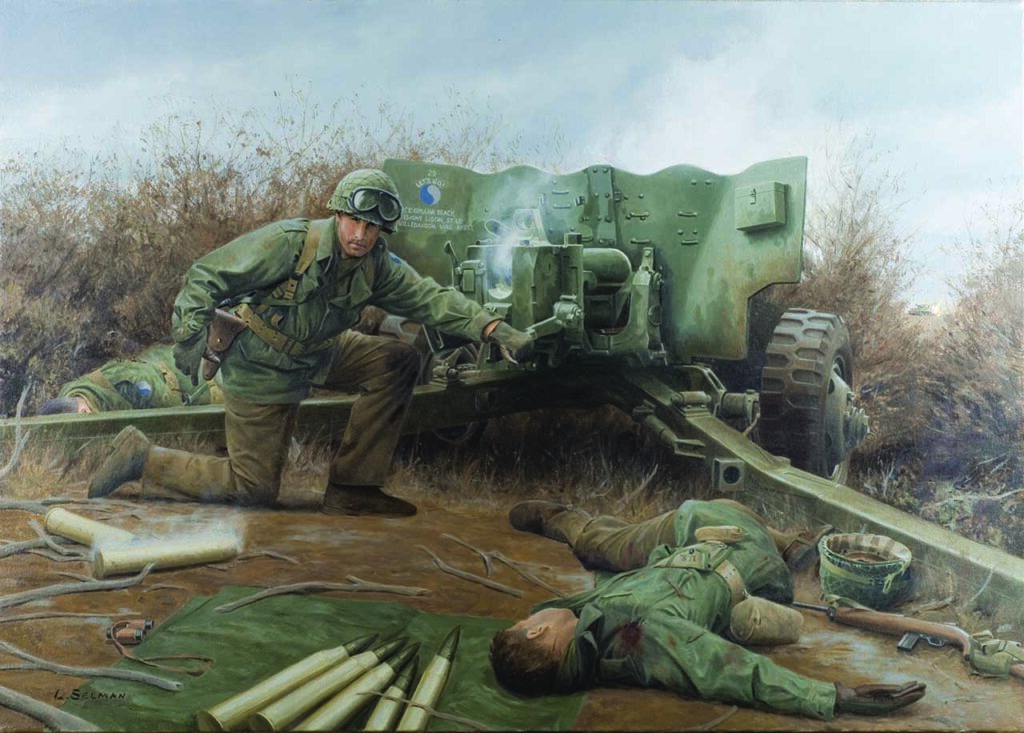
After nearly three months on the Roer, the 29th participated in Operation GRENADE, crossing the Roer on 23 February 1945 and capturing the German city of Julich. A week later, the 175th captured München-Gladbach. On 2 May 1945, soldiers from 3d Battalion, 175th Infantry Regiment, shook hands with part of 28th Company, 6th Guards Cavalry, of the Soviet Red Army at the Elbe River. A high price was paid for victory: 20,620 men from the 29th Infantry Division were casualties, nearly 4,000 of whom were killed in action or died of wounds. Only one other division—the 3d Infantry Division—suffered greater casualties. The 175th Infantry Regiment remained in Europe for the remainder of 1945, returning to the United States on 1 January 1946. The regiment was demobilized 11-17 January 1946 at Camp Kilmer, New Jersey, reorganizing on 12 November 1946, keeping the federal numerical designation.
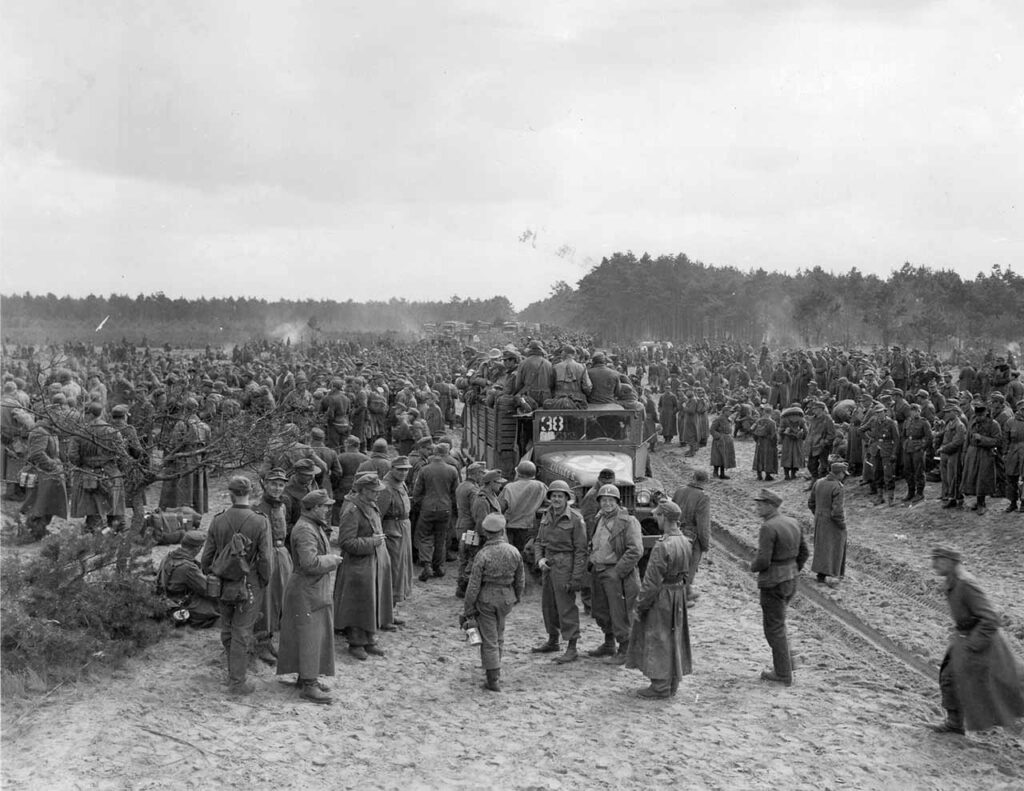
The 175th was reorganized on 1 March 1959 as the 1st and 2d Battle Groups, 175th Infantry, 29th Infantry Division. In 1963 the two battle groups were again reorganized as 1st and 2d Battalions, 175th Infantry, 29th Infantry Division. The State of Maryland mobilized the two battalions of the 175th in 1967, 1968, and 1971 to quell riots and maintain order at Vietnam War demonstrations at the University of Maryland. After the assassination of Dr. Martin Luther King, Jr., in April 1968, rioting lasted eight days in Baltimore, causing almost the entire Maryland National Guard and several active Army units to be called to restore order. Maryland Guard units were ordered into federal service on 7 April and reverted to state control on 12 April. During this event, the Maryland Guardsmen never fired a single live round.
In 1976 the 1st and 2d Battalions, 175th Infantry, were reorganized as elements of the 58th Infantry Brigade; nine years later, in 1985, they again became elements of 3d Brigade, 29th Infantry Division (Light), when the Blue and Gray Division was reactivated. Ten years later, in 1996, the 2d Battalion cased its colors, while 1st Battalion, 175th Infantry (1-175 IN) remained.
After the terror attacks of 11 September 2001, 1-175 IN was mobilized to protect installations in Maryland. The battalion was ordered into active federal service on 30 January 2003 to participate in Operation NOBLE EAGLE and was released from federal service on 29 January 2004. Company B, then part of 1st Battalion, 115th Infantry Regiment, deployed to Iraq with the 48th Infantry Brigade in late 2004; upon the company’s return in May 2006, it was reassigned to 1-175 IN. Following Hurricane Katrina in August 2005, elements of 1-175 IN deployed to assist in disaster relief in Louisiana. On 1 October 2005, the unit was redesignated as 1st Battalion, 175th Infantry Regiment. In 2006, a platoon was also deployed to the border with Mexico. On 1 September 2006, the 175th was consolidated with the 115th Infantry Regiment and the 629th Military Intelligence Battalion to form 1st Battalion, 175th Infantry, 58th Infantry Brigade Combat Team (IBCT). In so doing, the 175th also inherited the 115th’s Presidential Unit Citation for capturing Saint-Laurent-sur-Mer on 6 June 1944.
On 22 May 2007, 1-175 IN was called into federal service and it deployed to Iraq, assigned to the 3d Infantry Division. Deployed to Q-West in Qayyarah, Iraq, the battalion’s elements primarily operated as attachments to several other units. In 250 days of continuous combat operations, 1-175 IN suffered only eight wounded. The battalion redeployed to Fort Dix, New Jersey, in mid-April 2008 and was released from federal service on 24 June.
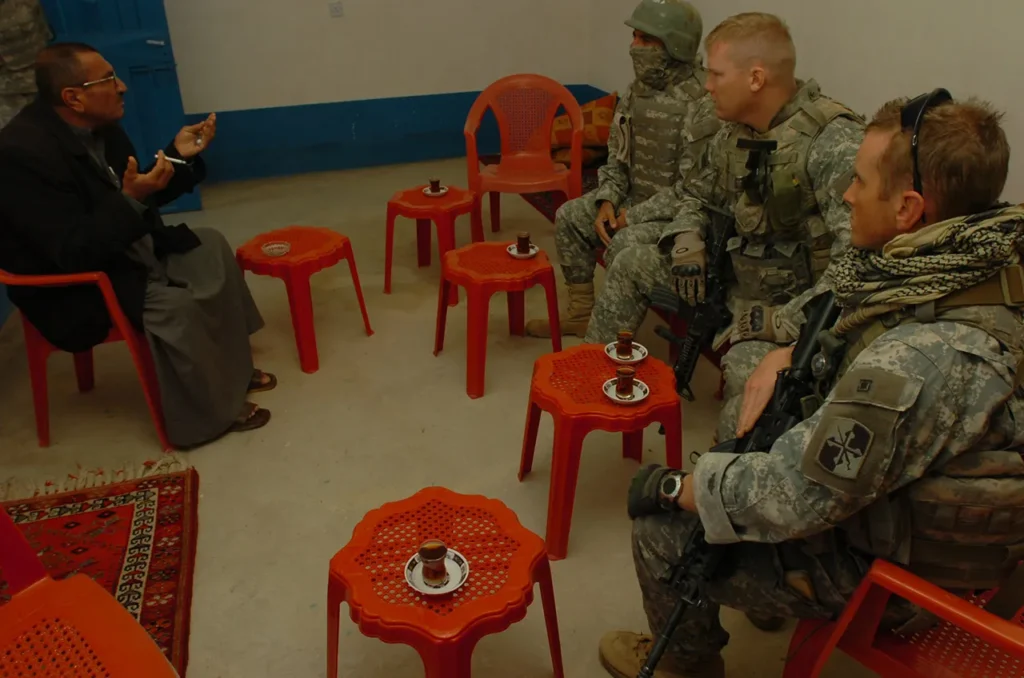
1-175 IN was ordered into federal service on 21 March 2011, and deployed to the Sinai Desert as part of the Multinational Force and Observers peacekeeping mission on the border between Egypt and Israel. The battalion was relieved from assignment to the 58th IBCT on 3 April 2012 and assigned to 2d Brigade Combat Team (BCT), 28th Infantry Division. The battalion returned from Egypt on 9 March 2012 and was released from federal service on 23 April. As of this writing, 1-175 IN is still assigned to 2d BCT, 28th Infantry Division, for active Federal service, but is otherwise under the 58th Troop Command when in state control.
In May 2015, the State of Maryland called on 1-175 IN to help quell civil unrest in Operation BALTIMORE RALLY following the death of Freddie Gray, a Baltimore resident who died while in police custody. The battalion was deployed for eight days until civil order was restored. During the COVID-19 pandemic, 1-175 IN was deployed after March 2020 to assist in efforts to combat the virus. Following the 6 January 2021 riot at the Capitol, elements of 1-175 IN deployed to the District of Columbia as part of Operation CAPITOL RESPONSE to provide security for the inauguration of President Joseph R. Biden. On 7 December 2024, 1-175 IN performed a Pass in Review to commemorate the 250th anniversary of the unit’s origins, back when Mordecai Gist founded the Baltimore Independent Cadets in December 1774.
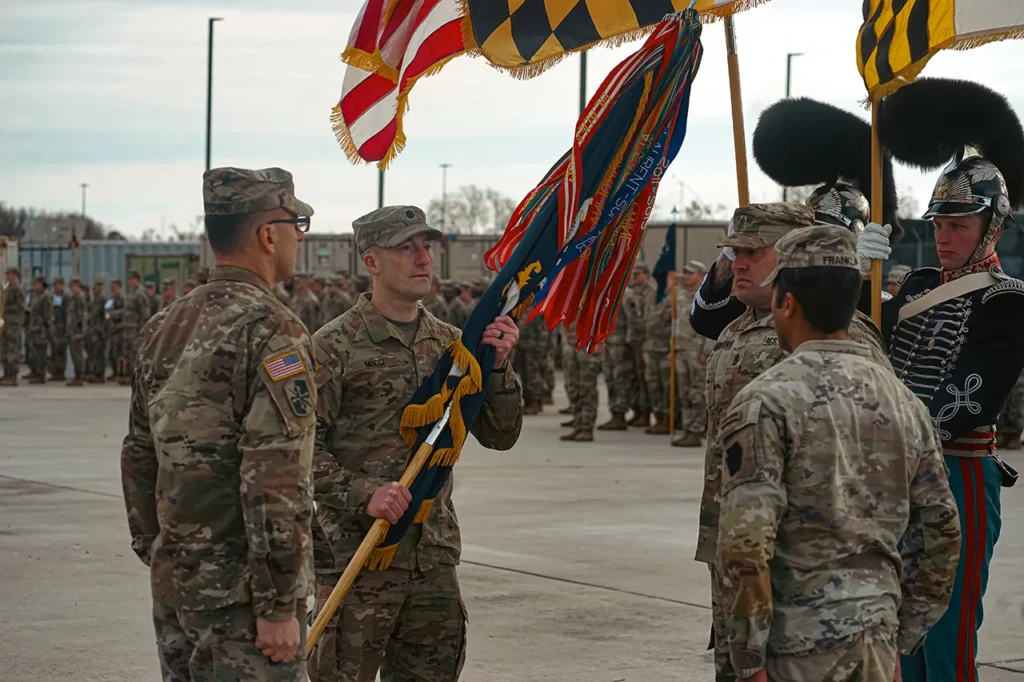
All told, 1st Battalion, 175th Infantry Regiment, is entitled to twenty-four campaign streamers (and an additional seven removed Confederate streamers). Individual units are entitled to more, such as Company A (Frederick) with two streamers for Iraqi Governance and National Resolution; Company B (La Plata) with a streamer for the Global War on Terrorism; and Company D (Easton) with eight Civil War streamers gained by fighting for the Union. The battalion boasts two Presidential Unit Citations, both for actions during the Normandy Campaign in World War II; two French Croix de Guerre with Palm and three Croix de Guerre with Silver-Gilt Star; the Army Superior Unit Award for 2011-2012; and individual units have been awarded two Meritorious Unit Commendations. Last but certainly not least, Headquarters Company (Dundalk) is entitled to the traditional designation of “Governor’s Guard.”
About The Author
Joshua Cline has been a Research Historian at the Army Historical Foundation since 2022, and is the book review editor of On Point: The Journal of Army History. He holds a B.A. in History from George Washington University, and is a prospective graduate student for a Masters in Library & Information Science from the University of Maryland.



